
From graffiti to self-made bombs: resistance movement in Ukraine’s occupied territories
Following Russia's full-scale invasion of Ukraine in February 2022, Russian troops took control of a substantial part of the country, and millions of Ukrainians found themselves in occupation. Some opted to collaborate, while much more joined the resistance movements fighting Russian occupation in various ways
In February 2024 Ukraine’s President Volodymyr Zelenskyy reported that about 26% of the country, that is around a fourth of Ukraine, is temporarily occupied by Russian forces. Most of these territories lie within five regions — Kherson, Zaporizhzhia, Luhansk, and Donetsk regions — and Crimea, which Russia illegally annexed back in 2014.
Millions of Ukrainians live in occupation, and tens of thousands of them help the Defense Forces of Ukraine (all the defense, security, and intelligence agencies) to counter Russia. The acts of resistance differ in size and nature: from a spray-painted Ukrainian flag to bombing cars of collaborators and reporting information about Russian military objects.
Espreso will tell more about the national resistance, how it operates, defying all threats, and the main underground movements.
What is national resistance movement?
The concept of national resistance is clearly defined in Ukrainian law. The components of resistance are territorial defense, the resistance movement Special Operations Forces, and the preparation of Ukrainian citizens for resistance.
At the end of February 2022, the National Resistance Center of Ukraine was created by the Special Operations Forces for the purpose of training, coordinating and scaling movements against the occupation of Ukraine.
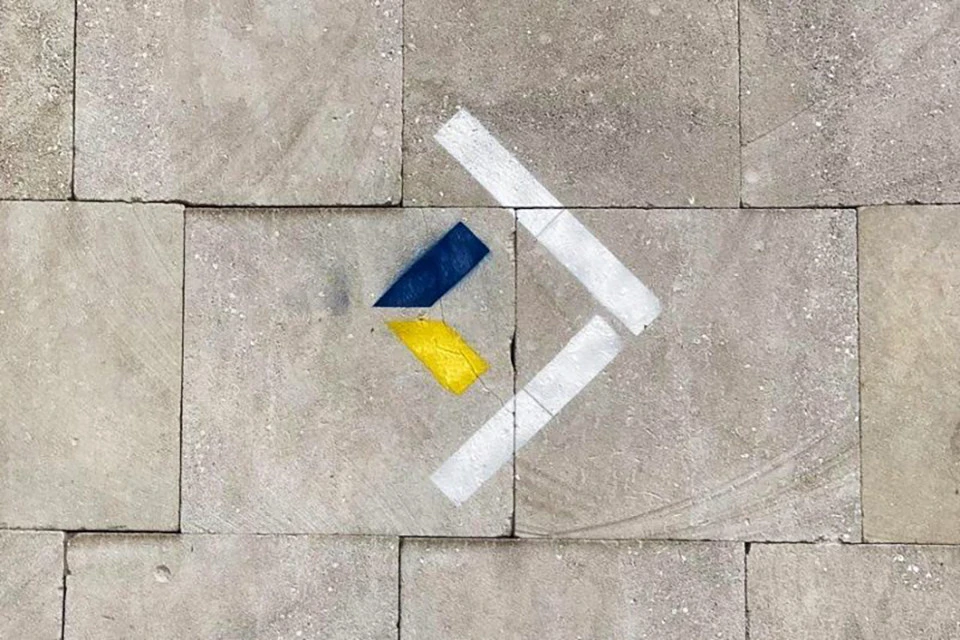
According to the Center's website, they teach non-violent resistance, help partisans, collect information about the Russian troops, establish communication between the underground, inform the population of Ukraine about events in the temporarily occupied territories, etc.
“It is important to understand here that there are two directions of such struggle: violent and non-violent. The first one is what you often see in the news: eliminating the enemy, blowing up a car or a railroad, etc. Non-violent means psychological pressure on the Russians: posting leaflets, ribbons, passing on information that later materializes into successful targeting," Ostap, a spokesman for the National Resistance Center, explained in an interview with Espreso.
“When we launched the National Resistance Center, we showed what and how to do it, and people started to organize themselves. They are not directly tied to reporting or following clear instructions. And we are proud that we have managed to create a truly national resistance," he added.
Ukrainian intelligence and law enforcement agencies have also created their own networks in the occupied territories, selecting and recruiting resistance members as well as organizing their activities.
In addition to intelligence gathering, a significant percentage of the resistance movement's operations are sabotage operations. These include, in particular, operations to disrupt the railway infrastructure, which extend far beyond the occupied territories of Ukraine. However, there is not much information about them, primarily due to security factors.
On April 20, the Center reported how the underground was destroying the logistics of the occupying army in Russia itself.
“The Russian army’s logistical model assigns the central role to the railway, making it the most vulnerable point. That is why underground members are increasingly damaging the components and mechanisms of railway transport — the main logistics arteries through which deliveries to the front are made,” the statement said.
The report was accompanied by the video, showing relay control cabinets for railway communication, interlocking cabinets, and transformer substations in the Orel, Kaluga, Lipetsk, Krasnodar, and Smolensk regions.
Defying threat of jail, torture or death
Everything matters, from a blue and yellow ribbon tied to a fence to a tip that culminates in the destruction of the headquarters of Russia’s Black Sea Fleet in Sevastopol.
Whether symbolic or military, the actions of Ukrainians living in Russian-occupied territories are a message of bravery, defiance, patriotism, and struggle.
Ukrainians know only about several underground groups that regularly inform the public about their activities on their social media. In fact, there are more of them, but not all of them can disclose their existence and publish reports on their work.
The reason is that openly admitting the existence of underground groups in small communities threatens the lives of the members of this underground and makes it easier for the Russian forces to track the partisan down.
Yellow Ribbon movement of civil resistance in occupation
One of the best-known underground Ukrainian resistance movements emerged in the city of Kherson after the Russian forces occupied it in the early days of the full-scale war.
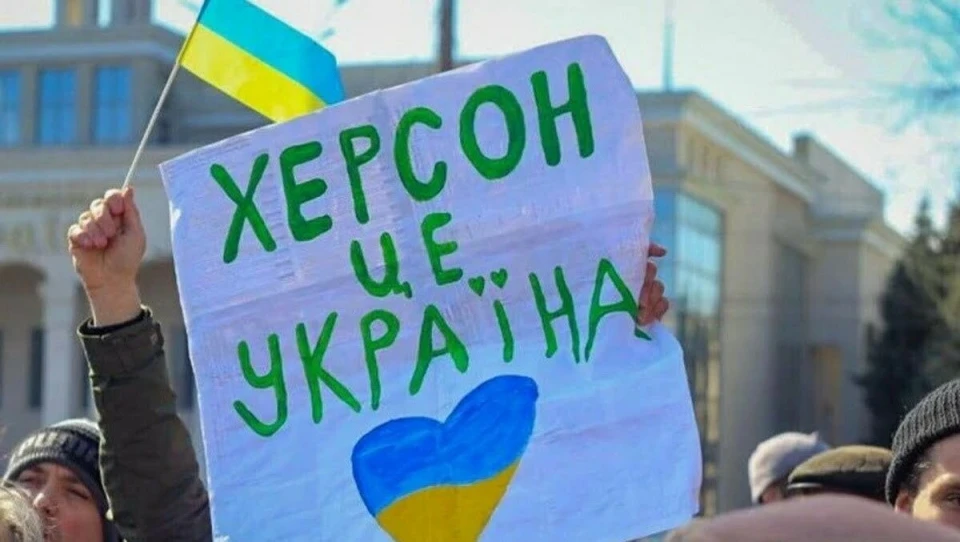
A Ukrainian man holds a poster saying "Kherson is Ukraine"
On April 27, 2022, activists of the movement held a pro-Ukrainian rally in Kherson. About 500 people took to the streets, four of whom were injured. This rally was the impetus for the development of the movement. Subsequently, yellow ribbons began to appear in Oleshky, Melitopol, Nova Kakhovka, Berdyansk, Yalta, Simferopol, Kerch, Donetsk, Luhansk, Henichesk, Alushta and other cities and villages of the temporarily occupied territories.
The Yellow Ribbon is a peaceful resistance movement. Its activists remind people that they are still in Ukraine, that Russian occupation is not forever, that no one abandoned them. They also tie ribbons in the blue-and-yellow colors, spread leaflets, unfurl the Ukrainian flag and draw graffiti.
Activists say they do not share any information about the positions of the Russian forces with the Ukrainian army. However, this does not make their work less risky. The Yellow Ribbon activists struggle in the face of Russian terror campaigns, which are designed to wipe out any pro-Ukrainian sentiment.
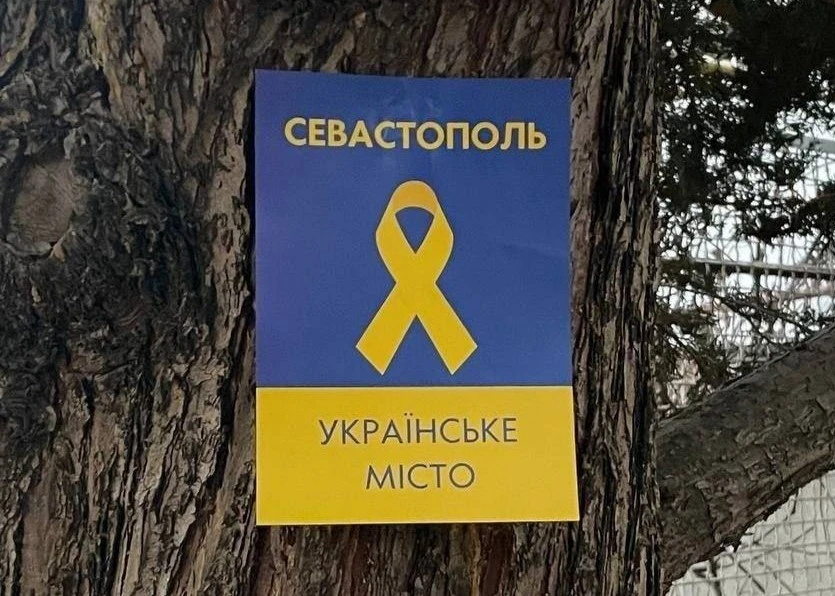
"Sevastopol is a Ukrainian city", a card says
In October 2023 the group reacted to Elon Musk’s claim that there is no “significant insurgency” in occupied Ukraine, and that those currently living in occupied areas of Ukraine would actually “vote to be part of Russia.” Yellow Ribbon posted numerous photos from Crimea, Zaporizhzhia, Donetsk and Luhansk region under the hashtag #ElonWeAreHere.
On the Day of the National Unity of Ukraine, activists of the Yellow Ribbon movement unfurled the Ukrainian flag on the top of Pakhkal-Kaya mountain in Crimea.
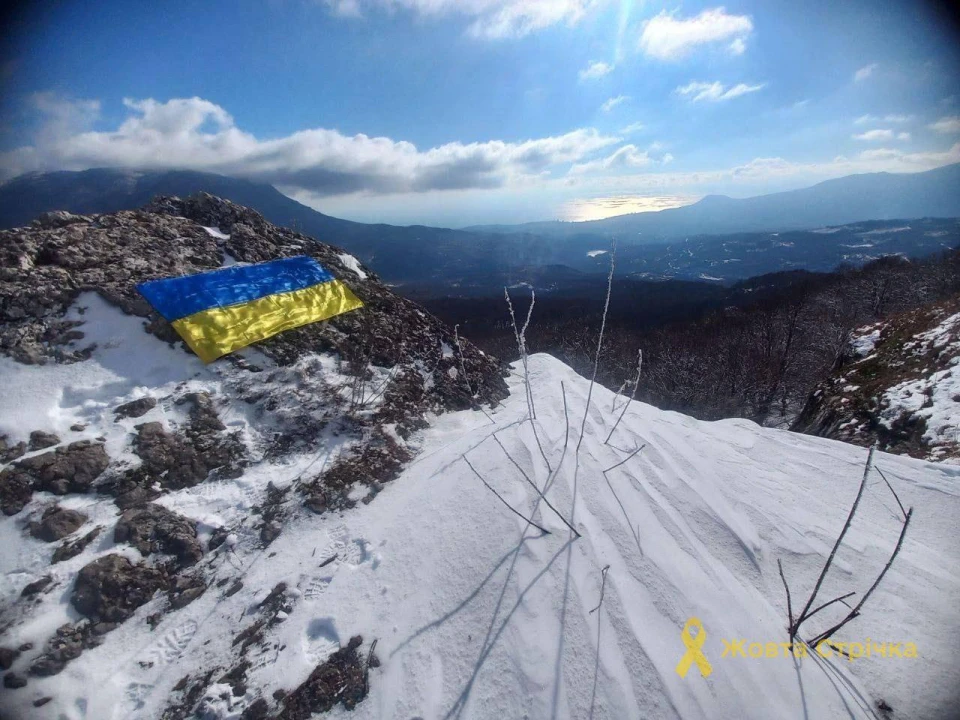
“We unfurled the flag on one of the Crimean mountains to show the unity of the Ukrainian people, because Crimea is Ukraine!
Today, the symbol of Ukraine flies above the top of Crimea, and very soon, together we will adorn the entire peninsula with blue and yellow flags,” the resistance said on January 22.
Most recently, Ukrainian graffiti were seen in the city of Donetsk.
“In different places of the Donetsk region, local residents can see their national flags, because Donetsk is Ukraine!
No fake elections and referendums have changed and will change anything,” the movement noted.
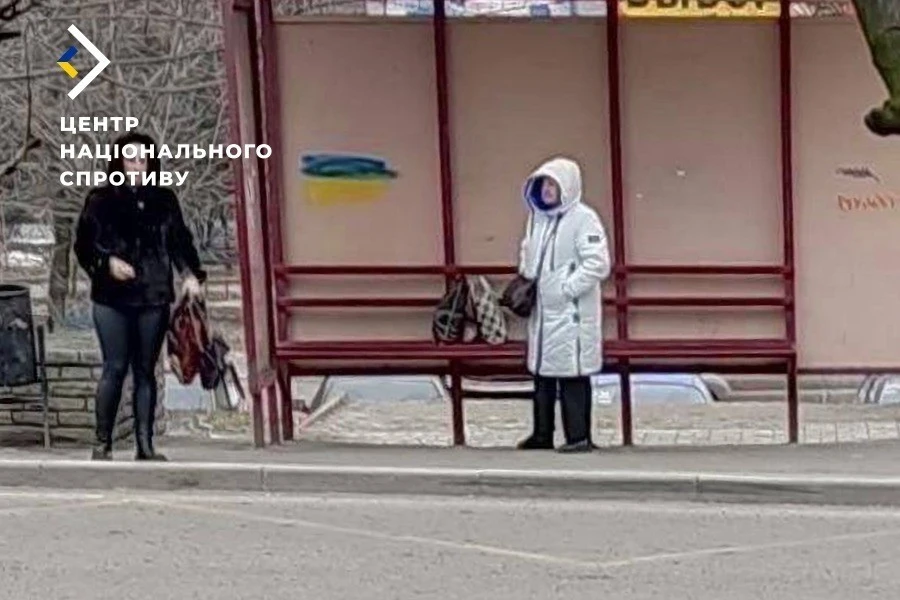
Photo: The National Resistance CenterThe group's recruitment process is carried out with the help of an anonymous Telegram chatbot, where Yellow Ribbon also provides advice on peaceful resistance, cybersecurity, and legal issues.
Ukrainian officials say that despite its symbolic nature, such actions are a powerful element of hybrid warfare. Campaigns demoralize Russians and bring hope to citizens with pro-Ukrainian positions behind the enemy lines.
Angry Mavkas – non-violent resistance and a bit of moonshine
The movement was formed in March, 2023, in the Russian-occupied Melitopol. According to open sources, it was founded by three friends. Over time, many participants from Crimea, Kherson, and Zaporizhzhia regions joined. The group is made up entirely of Ukrainian women, and its name comes from a siren-like mythological creature in Ukrainian folklore that lures men to their deaths.
"All the time during the occupation, we tried to show our resistance, helped other movements. And we always thought it would be cool to do something for women," says the co-founder of the movement in an interview for DW. "The occupying Russian forces, I think, did not expect this from girls and women.”
In general, women collect information about the Russian army, put up flyers, draw graffiti, and keep Mavka Diaries about life under occupation.
In addition to the information struggle, the underground women organize direct action:
"Sometimes we also have a so-called 'Mavka's kitchen' — we have the opportunity to deliver, so to speak, 'goodies' to the invaders, we add laxatives to them. And under the conditions of the "dry law" they are very much searching for strong alcohol," the movement member told Radio Liberty.
In early 2023, the Mavkas coordinated the large-scale printing of counterfeit 50-ruble notes. With various details changed, but it was only visible after close inspection, the messages were intended to catch the attention of Russians and others when left in public places.
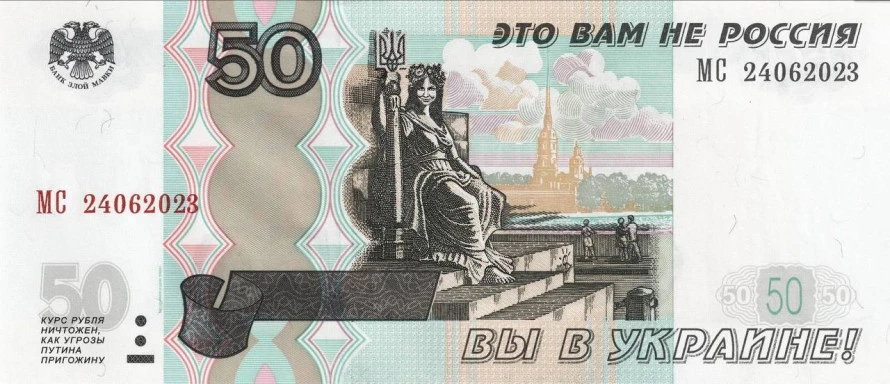
Photo: Angry Mavkas
The “Bank of Russia” logo is replaced with “Bank of angry Mavka”, the original scepter is topped with the Ukrainian trident, the Mavka’s head replaces the original, the “Banknote of Russia” is changed to “This is not Russia”, “Fifty rubles” is changed to “You are in Ukraine!”
What women join Angry Mavkas? Usually they are pro-Ukrainian, who are waiting for the Ukrainian army to liberate the Russian-occupied territories, and understand that they need to do something.
A personal grudge against the occupation forces motivates others. Some members of the resistance movement have been personally captured or have relatives who have been arrested or killed as a result of the occupation. So they are looking for revenge.
Atesh: bombing railroads and collaborators, gathering information about Russian troops
Armed partisan groupings, like Atesh (“fire” in Crimean Tatar) are also making their existence felt behind the enemy lines. The participation of members of the resistance movement in direct operations during a modern warfare is limited due to the significant risk of network disclosure.
The use of artillery and missile systems to destroy targets in occupied territory, along with UAVs, is more efficient than ambushes and raids by small forces. However, the resistance movement continues to be a valuable instrument for sabotage of key infrastructure, intelligence collection, and adjusting fire.
Unlike Yellow Ribbon or Angry Mavkas, Atesh has a slightly different method of fight. It is a military guerrilla movement that operates not only in Ukraine but also in Russia, and its agents are mobilized into the Russian army for subversive activities.
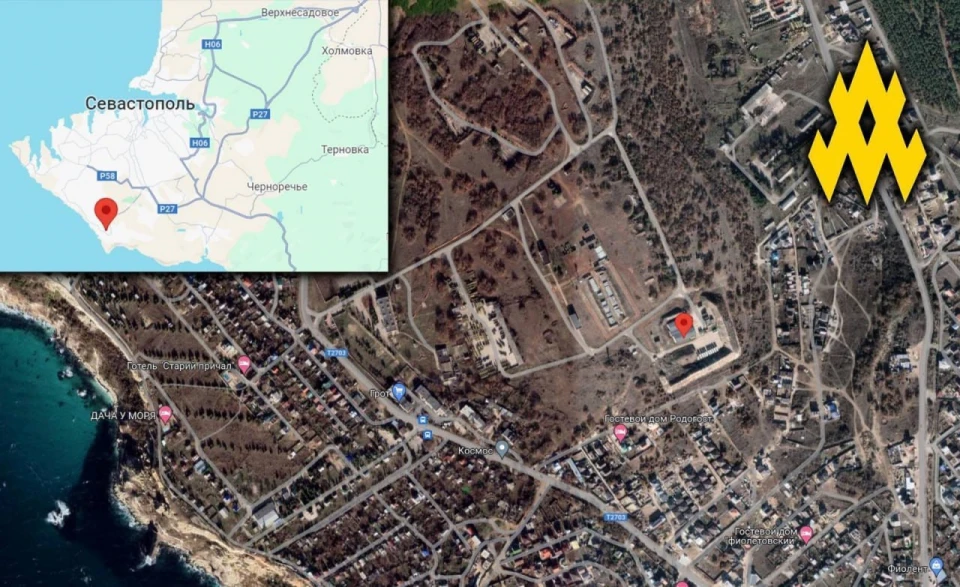
It was created in September 2022 by Ukrainians and Crimean Tatars. Most of the movement's operations are concentrated in Ukraine’s south, including the Crimean peninsula. In addition to violent resistance, the movement's members are actively engaged in propaganda and gathering information about the enemy.
One of the most remarkable operations, which were coordinated by Atesh, took place in September 2023. First, a Russian landing ship Minsk and submarine Rostov-on-Don were destroyed in their docks in occupied Sevastopol. And just 10 days later, Ukrainian Storm Shadow-type missiles hit the headquarters of Russia’s Black Sea Fleet during a meeting of top commanders.
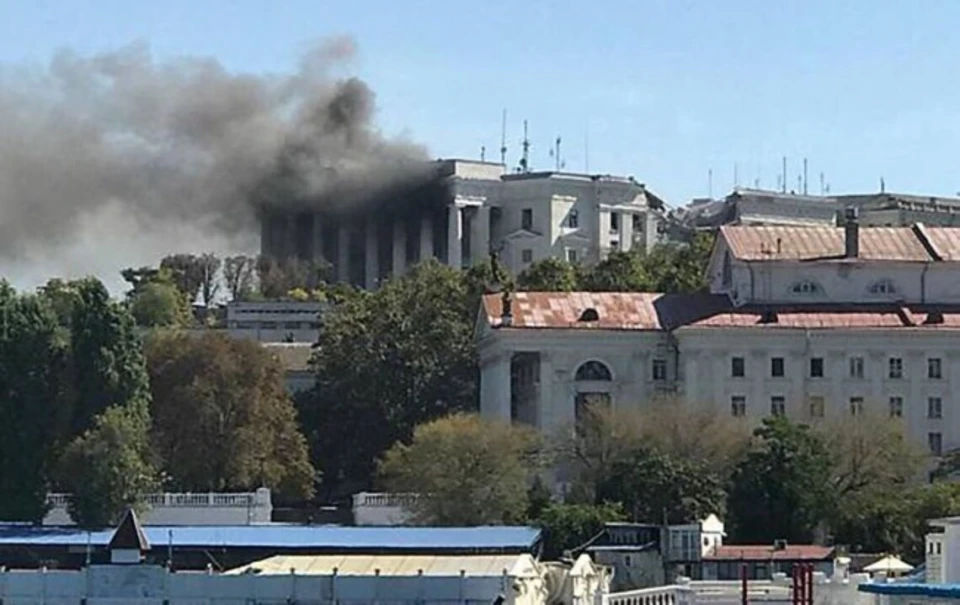
On April 17, Atesh reported that the Russian S-400 missile system was hit near the command post on the air field in Dzhankoi. The partisans said that they learned about the consequences of the hits from agents in the ranks of the Russian armed forces.
On April 19, Atesh partisans approached the naval base of the Black Sea Fleet in Novorossiysk
"The Russian Federation has moved most of its warships to Novorossiysk from Crimea. Soon they will be destroyed here as well," they emphasized.
And on April 22, the partisans in the occupied territories have found out that Russian air defense is not functioning well, and that the military personnel are fined for failing to repel air attacks by the Ukrainian Defense Forces.
On its Telegram channel, Atesh publishes its daily reports on the whereabouts of Russian military objects, Russian missile logistics, locations of Russian air defense troops in occupied Crimea, etc.
Nightmare of occupying Russian forces and constant attempts to find partisans
The invading Russian troops are afraid of the Ukrainian underground. While the civilian and military sectors are working together, there are both threats and actions, comments Ostap, a spokesman for the National Resistance Center.
He also emphasizes that life under occupation is very different from the life of civilians in the government-controlled territories, so it is hard to talk about the mood of the population.
People cannot say what they think and have to publicly agree to Russian rule in order to survive. For example, taking a Russian passport is a condition for access to basic medical care, pensions, and permission to leave the town in the occupied territories. However, the underground feels the support of people.
"No one there will speak their minds out loud, and we ask people to be careful. I can only say one thing, we feel the support of the population, we know it is there, and it inspires us to carry on the fight we are fighting. People often risk their lives to pass us some information," Ostap added.
In order to identify the members of Ukrainian resistance movement, the occupation authorities regularly raid houses, businesses, install checkpoints anywhere they want, check cell phones and gadgets, interrogate people in basements and garages.
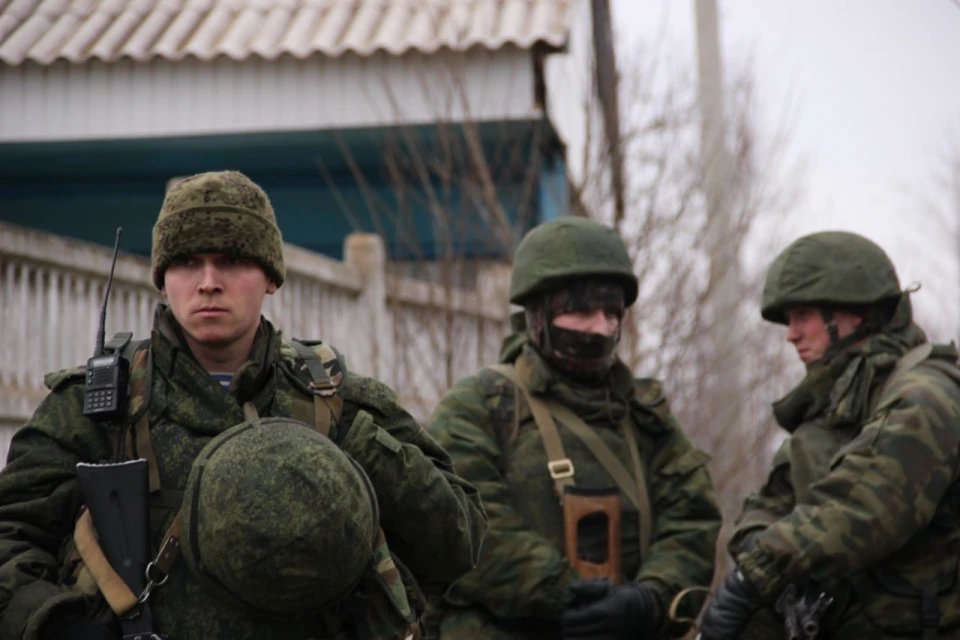
Electronic warfare is also intensifying: the Russian troops are installing special devices in civilian areas to track the transmission of information or jam the mobile connection. In addition, they are installing CCTV cameras in cities, which can be observed in Crimea, Mariupol, Berdyansk, and Melitopol.
Despite the grave risk, the will of Ukrainians under occupation to be liberated has not dwindled, the National Resistance Center says. Ukrainian resistance movement evolves and continues to adapt. ‘Ceasefires’ and territorial concessions to Russia are mainly regarded as unacceptable among Ukrainians. So the question is not whether to continue the resistance, but rather how and in what form.
- News














































